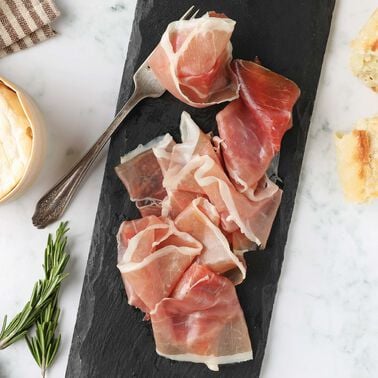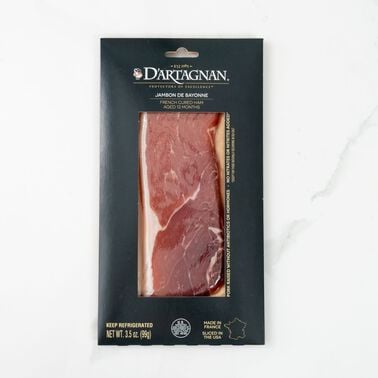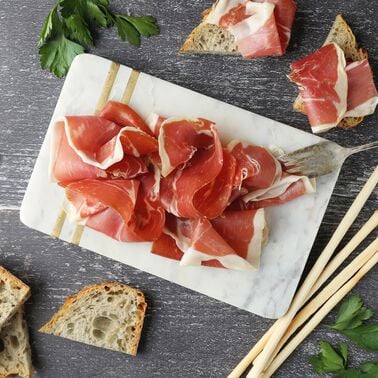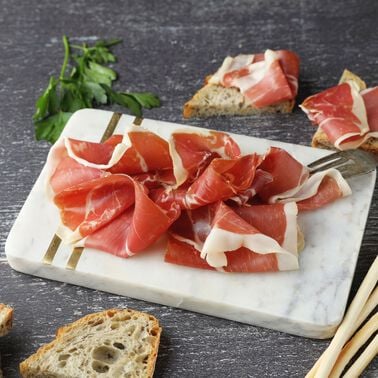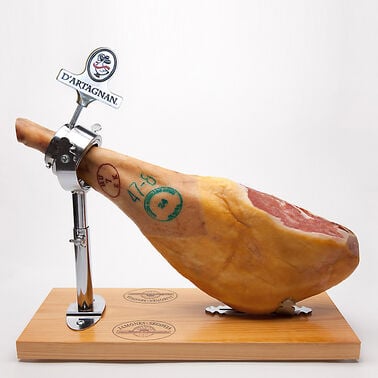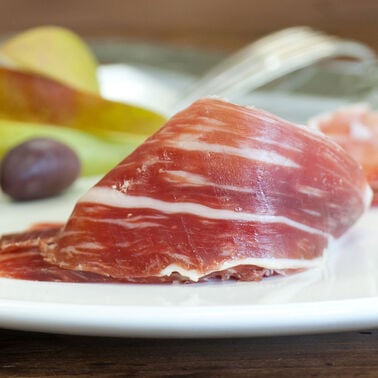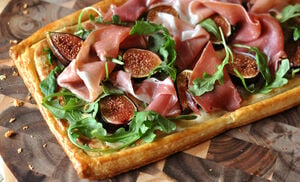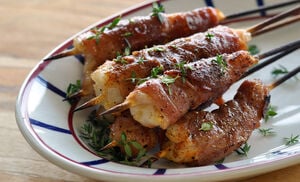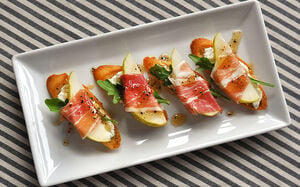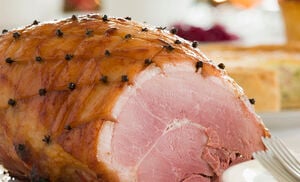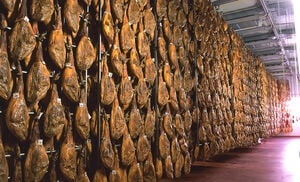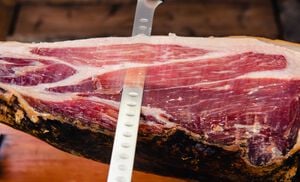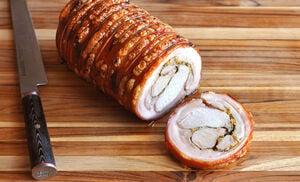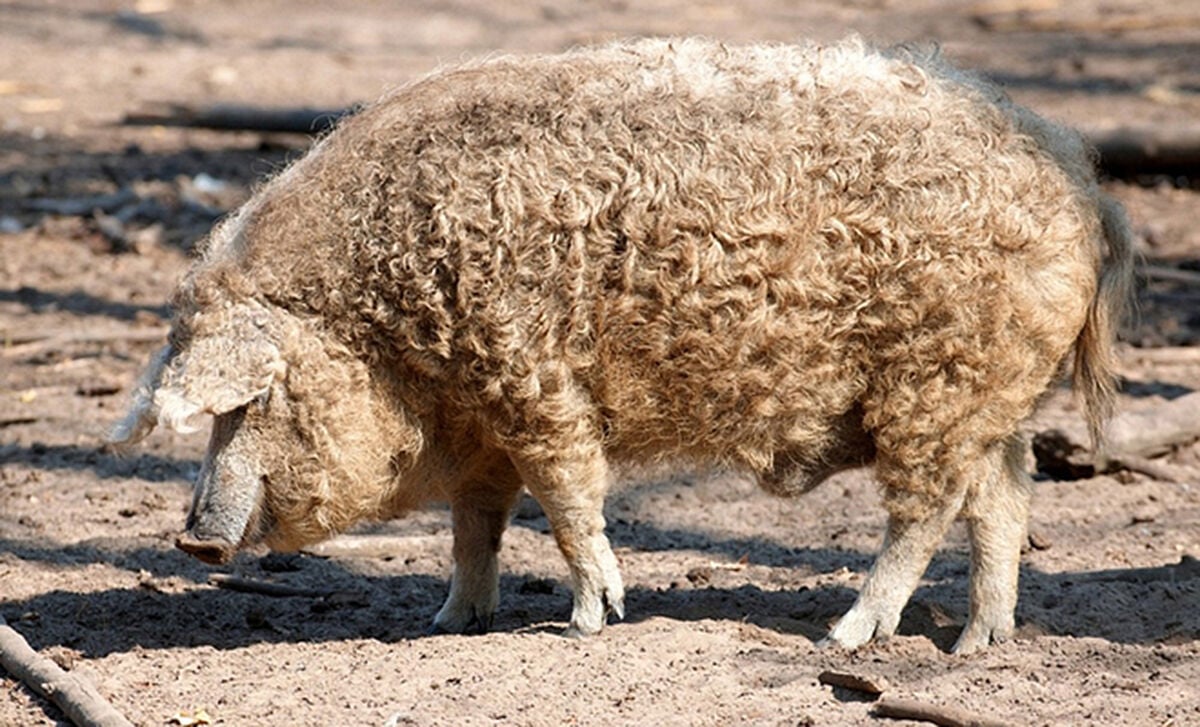
Praise the Lard
How does a pig go from being the most popular and commonly raised breed in the mid-1800s to near extinction by the 1990s? The answer lies in the fat. Mangalica are “lard type” pigs, and before vegetable oils were introduced, lard was the cooking medium of choice, and used for candles, soap, and cosmetics. Even industrial lubricants and explosives were produced from this valuable fat. Lard fell from favor in the mid-20th century when modern science declared that saturated fats were dangerous to human health.
However, lard has less saturated fat and more unsaturated fat than an equal amount of butter, and contains no trans fat, unlike margarine, vegetable shortenings, and hydrogenated fats. Lard has been seeing a comeback in recent years, as chefs realize that no other cooking medium has the same qualities and flavor as lard. Foodies and farmers are rehabilitating the reputation of lard, and science is even reexamining the studies on lard.
The Wooly Pig
But in Hungary, by the mid-20th century, there was little value placed on the odd and stout woolly pig that generations had raised for its creamy lard. Industrial farming techniques were being introduced and the Mangalica was not well-suited to the new intensive style of agriculture. The pig requires lots of space and access to the outdoors, and is uniquely protected from the cold weather of the Hungarian Steppe by its fleecy coat. Also, the Mangalica grows slower than the leaner and meatier breeds that began to replace it, and fewer farmers wanted to take the time. Also working against it, the Mangalica produces fewer piglets than the lean superstars of industrial farming. All good reasons to stop raising Mangalica pigs, and as traditional farming fell by the wayside, the Mangalica became a less common sight at Hungarian farms.
Eat Them to Save Them
In the early 1990s, there were just 198 Mangalica pigs left and a Hungarian animal geneticist became alarmed. He began a program that encouraged dedicated farmers to keep the breed alive, and raise the pigs on pastureland traditionally. Cooperatives of farmers were formed to protect the breed, and over 20 years, as the numbers stabilized, traditional Mangalica sausage with sweet paprika became available in the Hungarian markets again. When people stop eating a breed, farmers stop raising the animals. Thus, the seemingly contradictory logic of the phrase: “Eat them to save them.”
Today there are over 50,000 Mangalica pigs available annually, which still makes them a very special and limited breed, but well out of the danger zone for extinction. There are even a few specialized farmers raising Mangalica pigs in the United States today. And Slow Food, an international organization that preserves traditional foods and endangered animal breeds, and stands against the industrialization of food has listed the Mangalica pig in its Ark of Taste, recognizing it as a breed worth saving (and eating).
Eating Mangalica
The Mangalica is one of the fattiest pigs in the world; on average 65-70% of the carcass is fat, and lean meat is only 30 - 35% of the carcass, compared to over 50% in modern breeds. But that meat is considered among the tastiest pork in the world. The meat of the Mangalica pig is reddish, marbled with creamy white fat, and is high in omega-3 fatty acids and natural antioxidants. This is due to the natural diet of forage, wheat, corn, and barley. Mangalica lard is lighter, and melts at a lower temperature, than lard from other pigs, because it contains more unsaturated fat. In Hungary, most Mangalica pork becomes sausage or salami. Because of the high fat content, cured Mangalica pork products can spend a longer time drying, which deepens the flavor without losing moisture.
In Spain, traditional ham makers discovered that Mangalica is ideal for the long, air-cured process that makes their hams famous around the world. A leg of Mangalica pork can age for up to 3½ years while maintaining a moist and pliant texture, a rich, deep red color, and a complex flavor. While the Mangalica pig will never be raised in great numbers, and as an artisanal product costs more than other heritage breed pork, it is gaining adherents who relish the intense flavor and abundant fat. Chefs across the United States have increasingly been serving Mangalica in both fresh and cured forms. If people keep eating them, it’s safe to say that the Mangalica is back - and fatter than ever.
